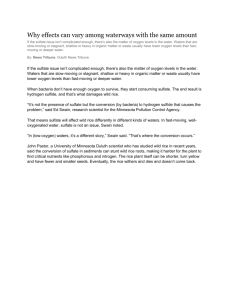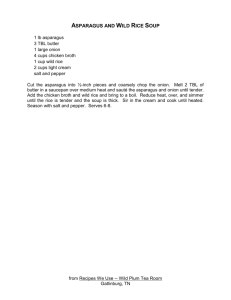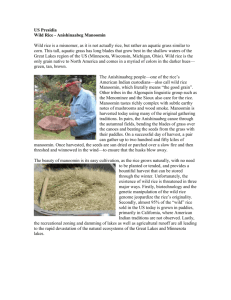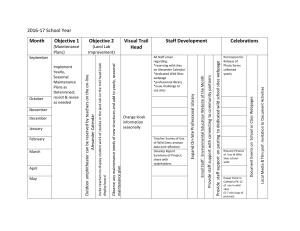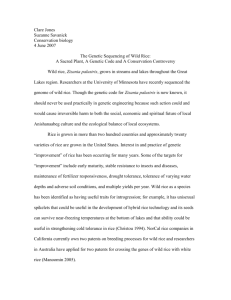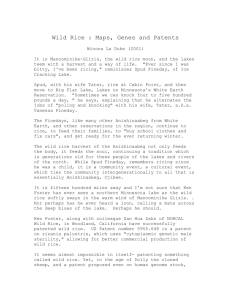Protect Our Manoomin
advertisement
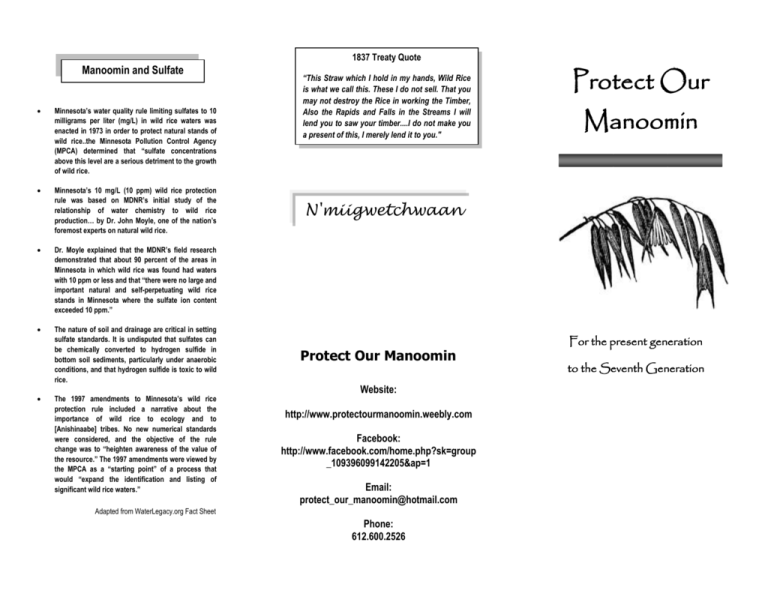
1837 Treaty Quote Manoomin and Sulfate Minnesota’s water quality rule limiting sulfates to 10 milligrams per liter (mg/L) in wild rice waters was enacted in 1973 in order to protect natural stands of wild rice..the Minnesota Pollution Control Agency (MPCA) determined that “sulfate concentrations above this level are a serious detriment to the growth of wild rice. Minnesota’s 10 mg/L (10 ppm) wild rice protection rule was based on MDNR’s initial study of the relationship of water chemistry to wild rice production… by Dr. John Moyle, one of the nation’s foremost experts on natural wild rice. Dr. Moyle explained that the MDNR’s field research demonstrated that about 90 percent of the areas in Minnesota in which wild rice was found had waters with 10 ppm or less and that “there were no large and important natural and self-perpetuating wild rice stands in Minnesota where the sulfate ion content exceeded 10 ppm.” The nature of soil and drainage are critical in setting sulfate standards. It is undisputed that sulfates can be chemically converted to hydrogen sulfide in bottom soil sediments, particularly under anaerobic conditions, and that hydrogen sulfide is toxic to wild rice. The 1997 amendments to Minnesota’s wild rice protection rule included a narrative about the importance of wild rice to ecology and to [Anishinaabe] tribes. No new numerical standards were considered, and the objective of the rule change was to “heighten awareness of the value of the resource.” The 1997 amendments were viewed by the MPCA as a “starting point” of a process that would “expand the identification and listing of significant wild rice waters.” “This Straw which I hold in my hands, Wild Rice is what we call this. These I do not sell. That you may not destroy the Rice in working the Timber, Also the Rapids and Falls in the Streams I will lend you to saw your timber....I do not make you a present of this, I merely lend it to you." Protect Our Manoomin N'miigwetchwaan aami Protect Our Manoomin Website: http://www.protectourmanoomin.weebly.com Facebook: http://www.facebook.com/home.php?sk=group _109396099142205&ap=1 Email: protect_our_manoomin@hotmail.com Adapted from WaterLegacy.org Fact Sheet Phone: 612.600.2526 For the present generation to the Seventh Generation Article 1. Inherent Rights of Manoomin Protect Our Manoomin < Ganawenimik Manoomin > N'miigwetchwaanaami Protect Our Manoomin believes that manoomin 1. As a living being, manoomin has the following inherent rights: a. the right to life and to exist; (wild rice) is a sustenance gift from the Gichi- b. the right to be respected; Manidoo (the Creator). In this respect, the c. the right to regenerate its bio-capacity and to continue its vital cycles and processes free from human disruptions; sustenance right to manoomin is sacred and cannot be constrained or recalled by colonial laws, policies, or institutions that impact and imperil the manoomin gitigaanan (natural wild rice stands) and ecosystem in northern Minnesota. We are resolved, as Bamaadizidjig (Anishinaabeg, nonAnishinaabeg, and non-Native peoples), to resist any changes that endanger our manoomin. We seek to create awareness of sulfate and sulfide pollution via mining and its harmful effects on manoomin – a vital cultural, spiritual, and environmental resource. We are guided by the Anishinaabe gete-gikendaasowin knowledge) of our elders. (traditional d. the right to maintain its identity and integrity as a distinct, self-regulating and interrelated being; e. the right to clean water as a source of life; f. the right to integral health; g. the right to be free from toxic pollution resulting from sulfide mining; h. the right to not have its genetic structure modified or disrupted in a manner that threatens its integrity or vital and healthy functioning. 2. Manoomin has the right to a place and to play its role in Omizakamigokwe (Mother Earth) for her harmonious functioning. Article 2. Obligations of Protect Our Manoomin 1. We believe that manoomin is a sacred being with inherent rights. As such: a. We oppose sulfide mining that will gravely impact manoomin and the ecosystem of northern Minnesota; b. We oppose legislative policies that endanger manoomin; c. We demand a moratorium until the Minnesota Pollution Control Agency completes its study on manoomin; d. We oppose the environmental racism that guides the policies of state agencies favoring mining interests; e. We demand redress for the environmental injustice committed against the inherent rights of manoomin as stated in Article 1; f. We oppose the Omizakamigokwe. ecocide of Article 3. Guiding Principal We will protect our manoomin for the present generation to the Seventh Generation.
